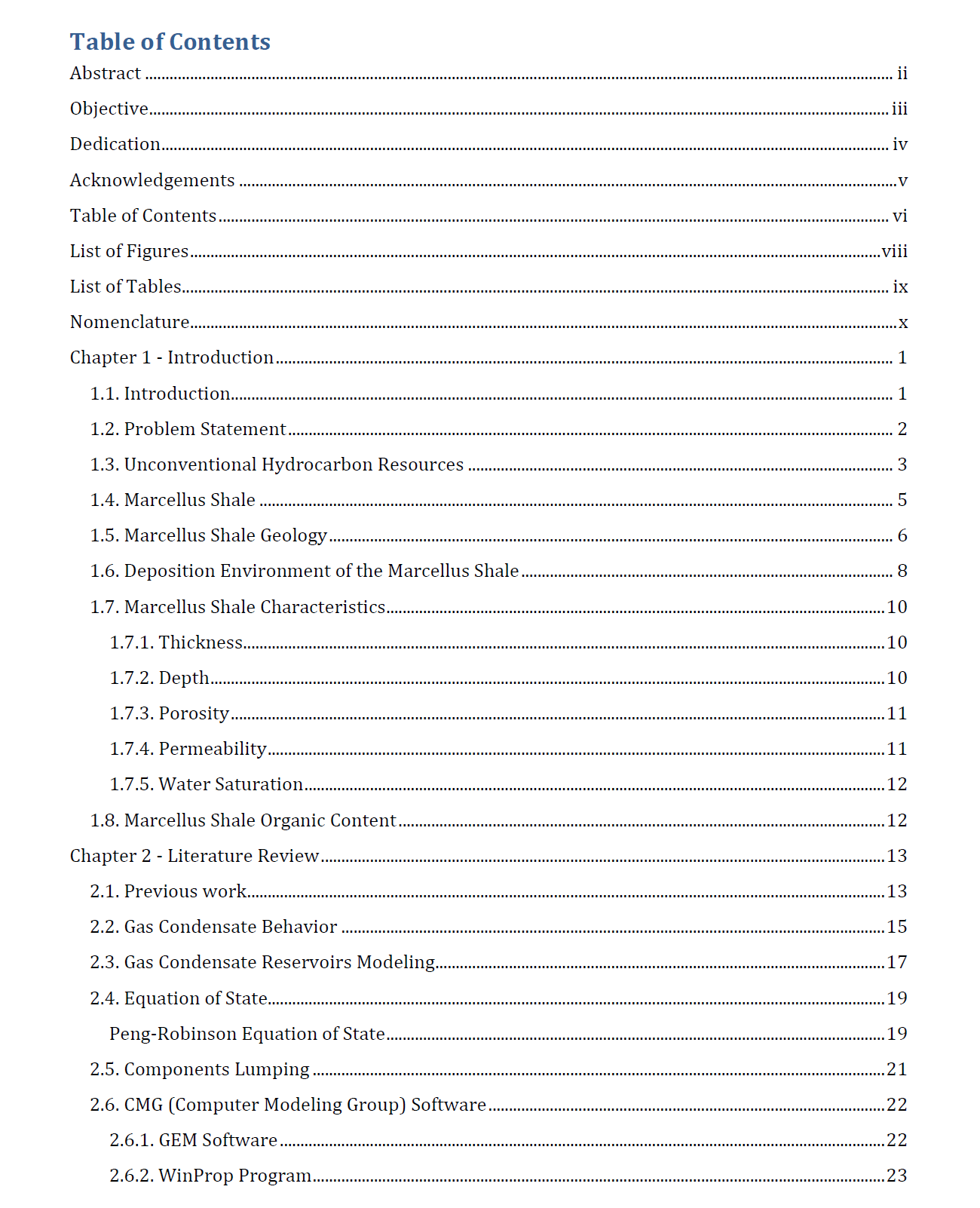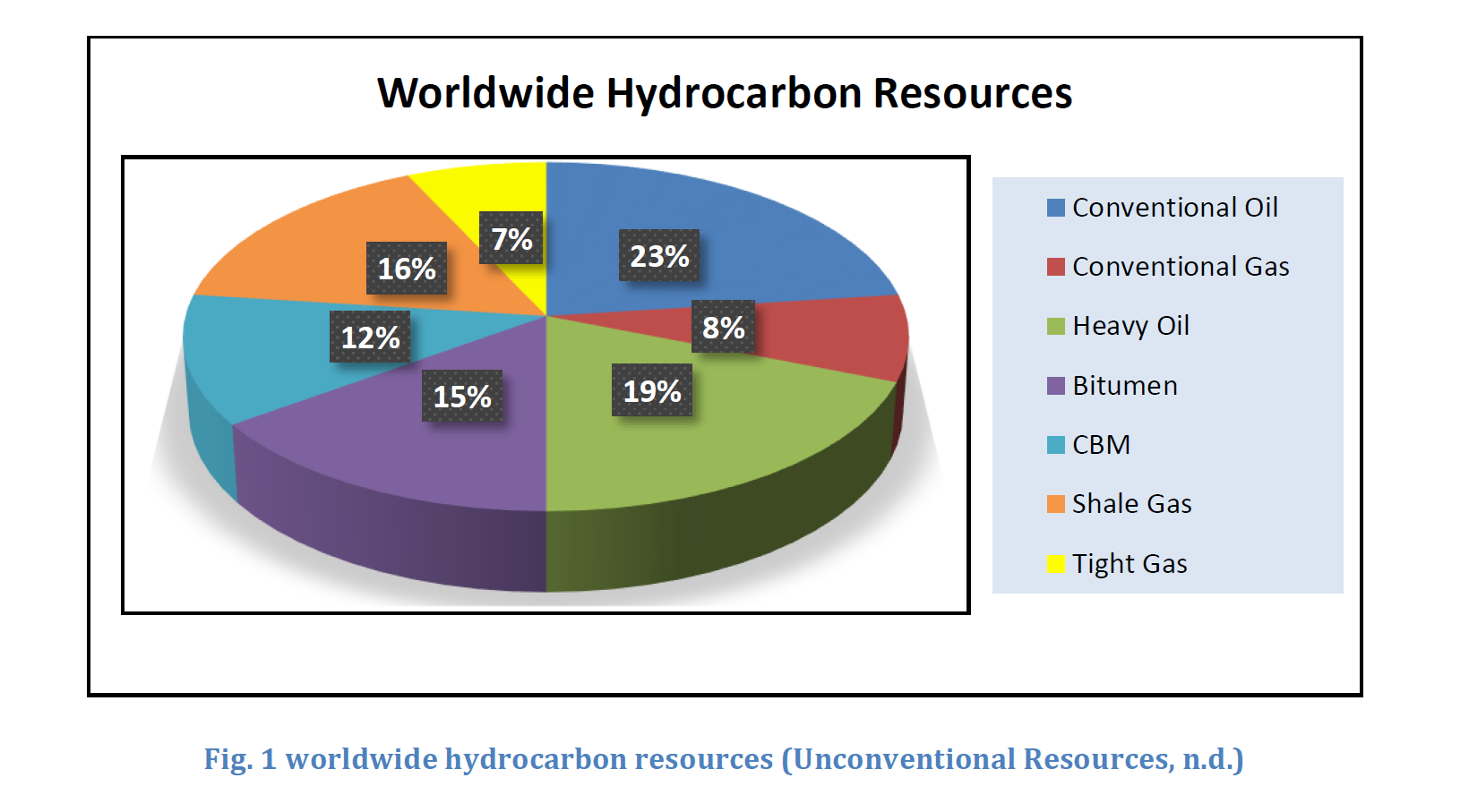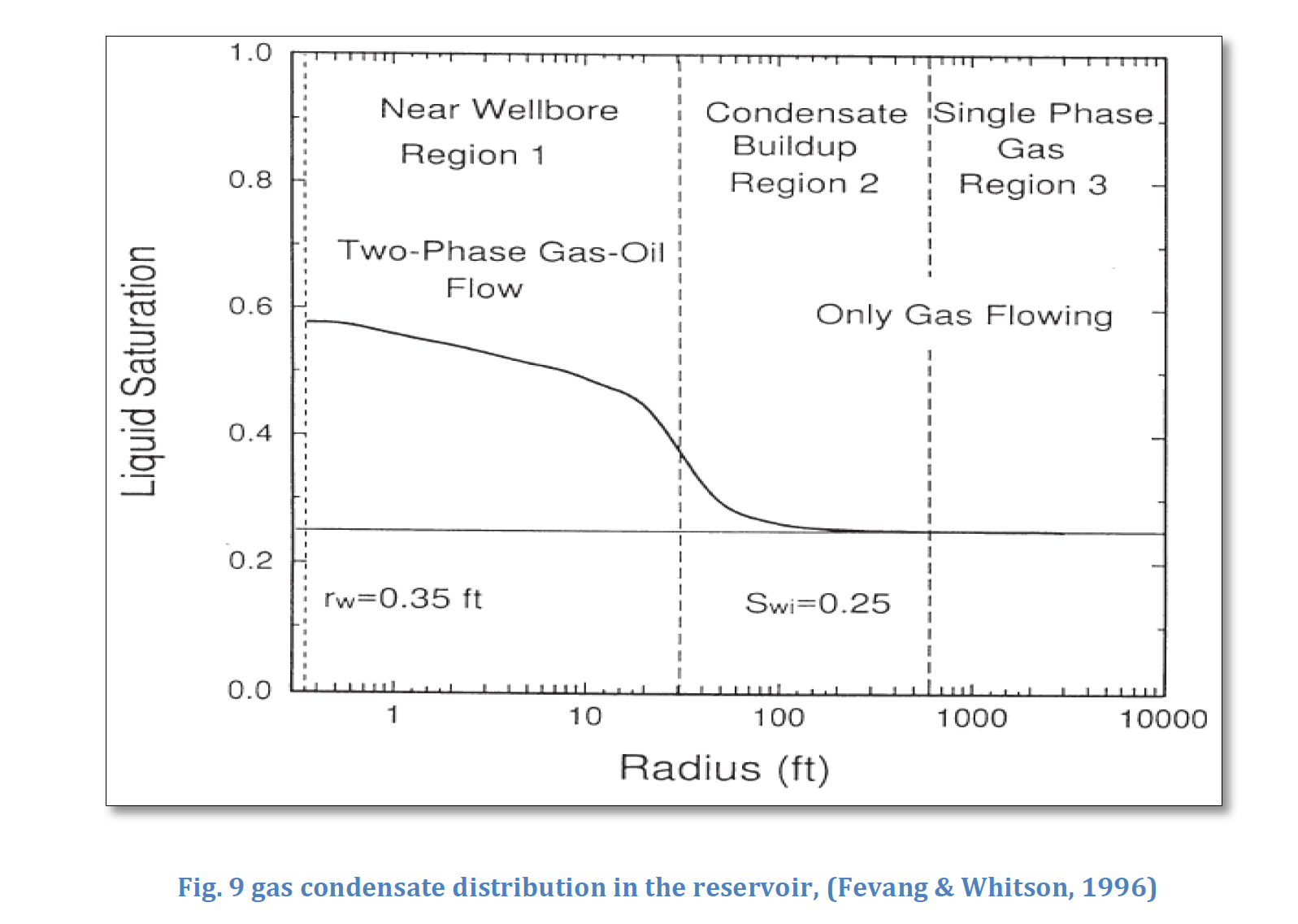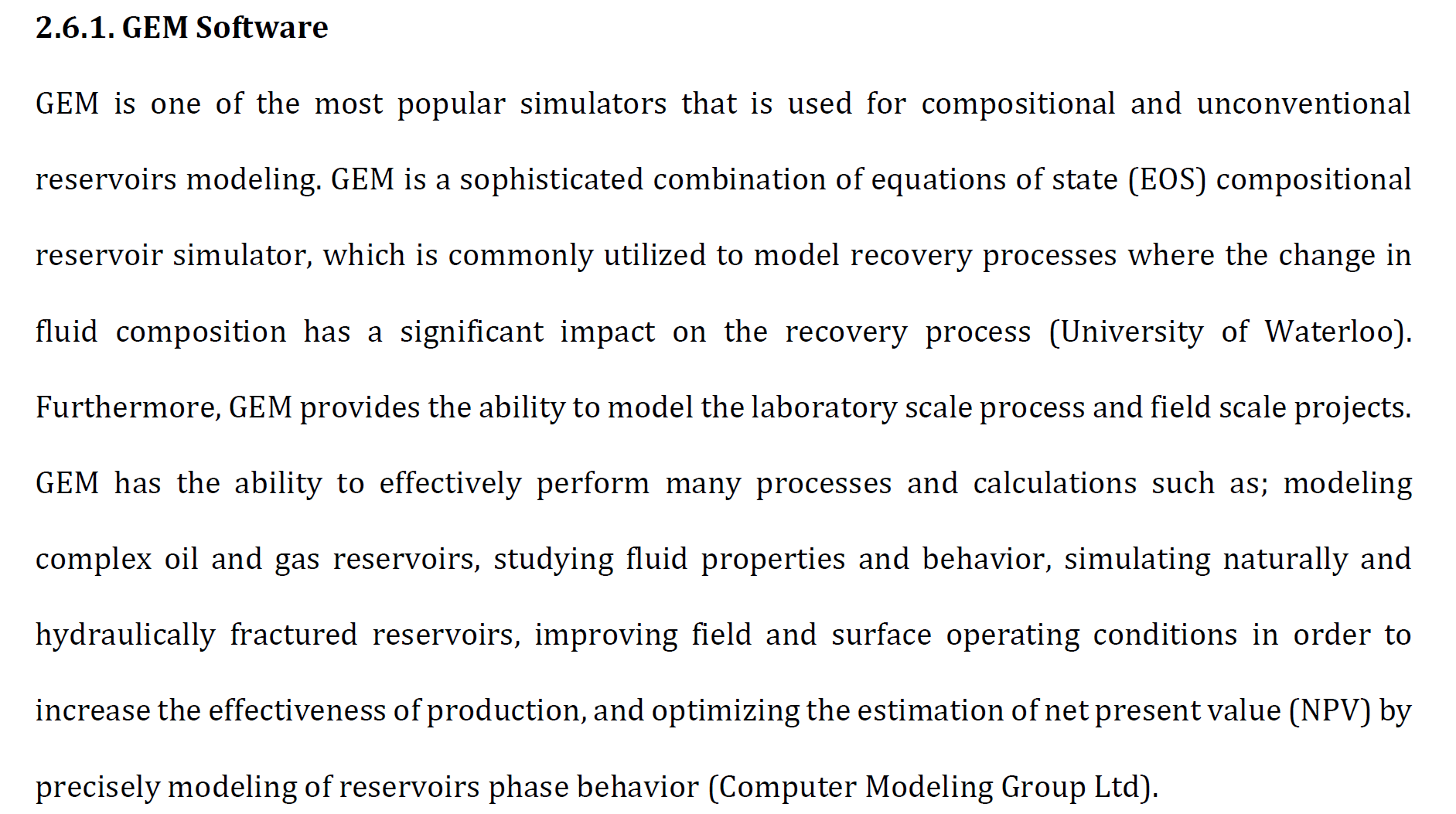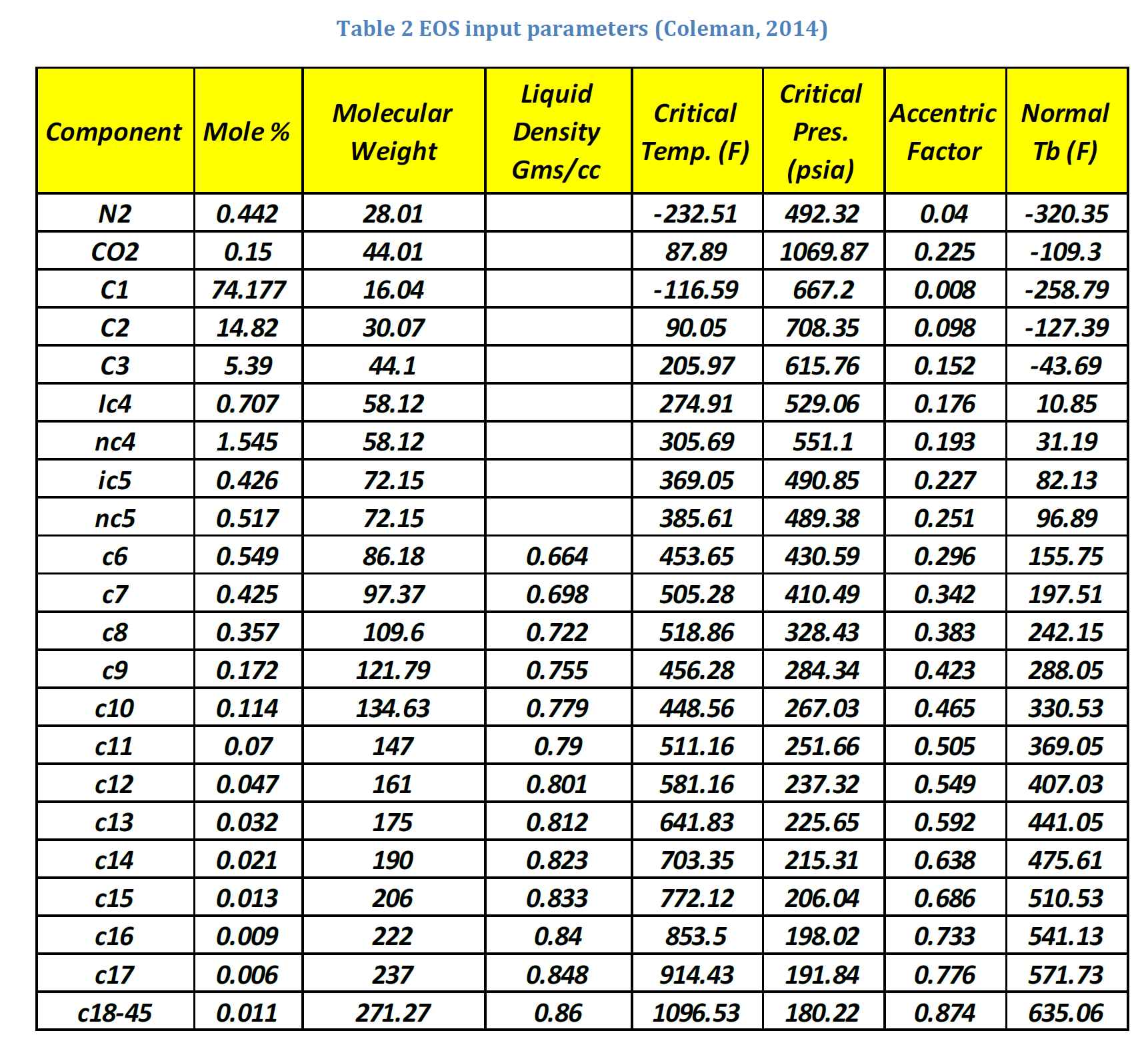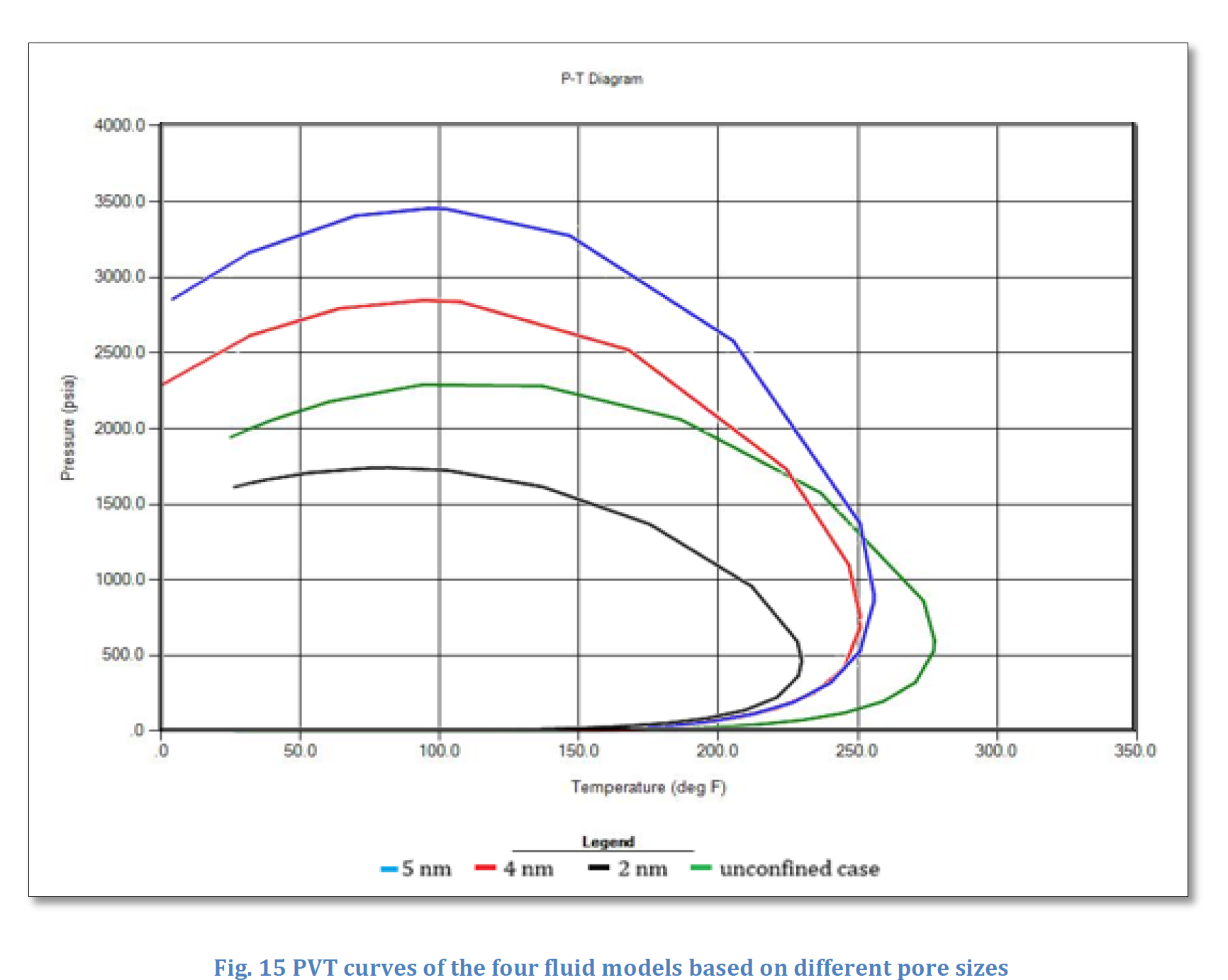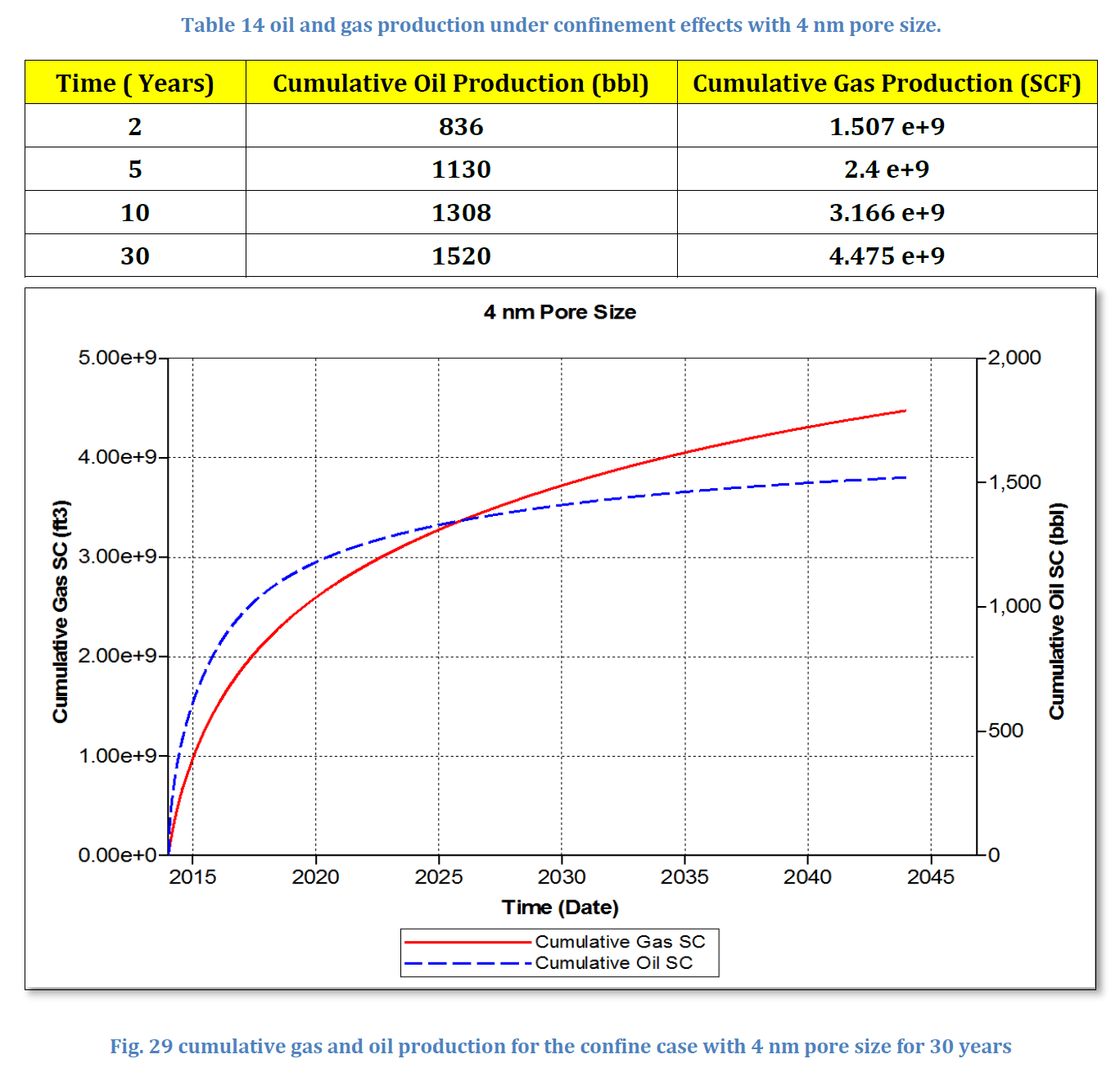Impact of Pore Size on Gas Condensate Critical Properties Confined in Marcellus Shale
Gas condensate reservoirs have become an important topic of research for reservoir engineers due to the drop in gas prices in the past few years. Because of this drop, the majority of gas producers have become more interested in condensate and wet gas resources. However, gas condensate reservoirs have a unique phase behavior system and they are considered the most complicated reservoirs to develop due to the continuous composition changes. Therefore, the effects of nanopores on the critical properties of the confined gas condensate in the Marcellus Shale will be investigated in this research in order to achieve the optimum gas and condensate production and to improve reservoir management plans for this kind of reservoir.
In this study, the given fluid data were used to construct a fluid model, which was then history matched with the given experimental measurements. The shift in the critical properties of gas condensate due to the pore confinement within the reservoir was calculated based on different pore sizes of 2 nm, 4 nm, and 5 nm. Then, a phase behavior and reservoir fluid program was used to build four fluid models, three models for the confinement case and a fourth model which represents the unconfined case, by the use of Peng-Robinson equation of the state (EOS). Next, four reservoir models were constructed by using a compositional and an unconventional reservoir simulator based on the obtained fluid models, from the phase behavior & reservoir fluid program, and the geological data of the Marcellus Shale. Finally, after constructing the reservoir models, many simulation runs were carried out in order to study the impact of the pore confinement on the gas phase behavior and gas condensate reservoir’s performance.
This research provides an insight and an explanation regarding how to optimize the gas and condensate production and maximize the economic revenue of the unconventional resources. It was concluded that producing more condensate and sustaining high gas production rate for a longer time can be achieved through producing the hydrocarbon from the confined formation with a nanopore size around 2 nm. The pore size of 2 nm can retard the pressure drop throughout the reservoir and result in sustaining the reservoir pressure higher than the dew point pressure. However, the confinement cases of pore size of 4 nm and 5 nm were found to have a negative effect on the gas and condensate production.
